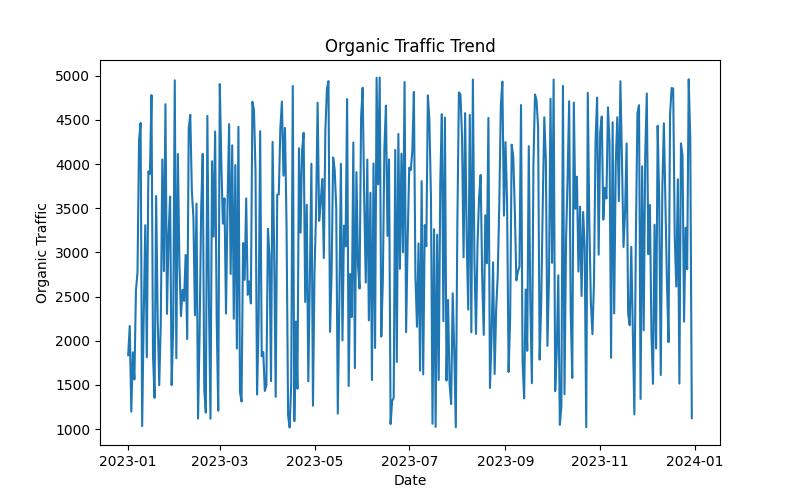What you will learn:
- The significance of SEO competitor analysis in enhancing your SEO strategy.
- The steps to conduct a comprehensive SEO competitor analysis, including identifying competitors and uncovering their keywords.
- How to analyze competitor keywords, understand ranking factors, and evaluate backlink profiles.
- How to implement the findings from your analysis to boost your rankings and improve website performance.

I. The Significance of SEO Competitor Analysis
In the highly competitive world of SEO, staying ahead of the game is crucial. One effective strategy to gain an edge over your competitors is through SEO competitor analysis. By understanding what keywords your competitors are targeting and how they are optimizing their websites, you can uncover valuable insights to enhance your own SEO strategy.
A. How competitor analysis enhances SEO strategy
SEO competitor analysis provides you with a comprehensive understanding of the competitive landscape in your industry. It allows you to identify your true competitors and analyze their SEO tactics, keyword selection, and overall website performance. This information helps you identify gaps and opportunities that you can leverage to improve your own website’s rankings and visibility.
When you conduct a thorough competitor analysis, you gain insights into the best practices and strategies that are working for your competitors. By identifying their strengths and weaknesses, you can develop a more effective and targeted SEO strategy. This analysis helps you focus your efforts on the areas that will yield the highest return on investment (ROI) and ensure that you are not missing out on any lucrative opportunities.
B. The advantages of uncovering competitor’s keywords
One of the most valuable aspects of SEO competitor analysis is the ability to discover the keywords your competitors are targeting. Keywords are the foundation of SEO, and knowing which keywords your competitors are ranking for gives you a clear roadmap to follow. By understanding the keywords that are already driving traffic to your competitors’ websites, you can identify high-potential keywords for your own website.
Uncovering your competitors’ keywords allows you to:
- Identify new keyword opportunities: By analyzing your competitors’ keywords, you can discover new keywords that you may not have considered before. This helps you expand your keyword strategy and target a wider range of relevant keywords.
- Understand keyword trends and patterns: Analyzing your competitors’ keyword selection helps you identify trends and patterns in your industry. This insight enables you to stay up-to-date with the latest industry trends and tailor your content to match the interests of your target audience.
- Prioritize your keyword strategy: By evaluating the search volume, competition level, and relevance of your competitors’ keywords, you can prioritize your own keyword strategy. Focus on high-volume, low-competition keywords that align with your business goals to maximize your SEO efforts.
- Outperform your competitors: By leveraging the insights gained from competitor keyword analysis, you can optimize your website and content to outrank your competitors in search engine results pages (SERPs). This gives you a competitive advantage and increases your chances of attracting organic traffic and potential customers.
II. Steps to Conduct a Comprehensive SEO Competitor Analysis
To conduct a comprehensive SEO competitor analysis, you need to follow a systematic approach that covers every aspect of your competitors’ SEO strategy. Here are the steps to help you get started:
A. Identify Your Competitors
The first step in competitor analysis is to identify your true competitors. These are the websites that are targeting the same keywords and audience as your website. There are two primary methods to identify your competitors:
- Utilizing Google search and industry directories: Start by conducting a Google search using your target keywords. Take note of the websites that consistently appear in the top search results. These websites are likely your direct competitors. Additionally, industry directories and niche-specific websites can provide valuable insights into your competitors’ landscape.
- Leveraging keyword research tools: Keyword research tools like Keywords Everywhere can help you identify your competitors by providing a list of websites that are targeting similar keywords. These tools analyze search engine data to identify websites that rank for specific keywords, giving you a comprehensive list of your competitors.
B. Uncovering Your Competitors’ Keywords
Once you have identified your competitors, the next step is to uncover the keywords they are targeting. This information will serve as the foundation for your own keyword strategy. Here are two effective methods to uncover your competitors’ keywords:
- Analyzing organic and paid keyword research tools: Keyword research tools like Keywords Everywhere and seoClarity’s Research Grid provide valuable insights into the keywords your competitors are targeting. These tools allow you to enter your competitors’ URLs and generate a list of keywords they rank for. Analyzing this data helps you identify the keywords that are driving traffic to your competitors’ websites.
- Examining keyword data for insights: In addition to keyword research tools, you can also analyze keyword data available on search engines. Conduct searches using your competitors’ brand names, product names, and industry-related terms to identify the keywords they are targeting. Take note of the keywords that consistently appear in the search results and analyze their relevance and search volume.
C. Analyzing Competitor Keywords
Once you have uncovered your competitors’ keywords, it’s time to analyze them for valuable insights. Here are the key aspects to consider when analyzing competitor keywords:
- Identifying patterns and trends in keyword selection: Analyze the keywords used by your competitors and look for patterns and trends. Are there specific types of keywords they are targeting? Are there any recurring themes? Understanding these patterns helps you align your keyword strategy with your target audience’s search intent.
- Evaluating search volume, competition level, and relevance of competitor keywords: Assess the search volume and competition level of your competitors’ keywords. Focus on keywords with high search volume and low competition to maximize your chances of ranking well. Additionally, consider the relevance of these keywords to your business and target audience to ensure they align with your overall SEO strategy.
- Prioritizing competitor keywords for optimal SEO results: Based on your analysis, prioritize the competitor keywords that offer the highest potential for driving organic traffic to your website. Develop a strategy to target these keywords effectively, ensuring that they are incorporated into your website’s content and meta tags.
D. Understanding the Factors That Influence Competitor Rankings
In addition to analyzing your competitors’ keywords, it’s essential to understand the factors that influence their rankings. By evaluating these factors, you can gain insights into their overall SEO strategy. Here are two key factors to consider:
- Analyzing on-page optimization elements: Review your competitors’ on-page optimization elements, such as meta titles, meta descriptions, heading tags, and keyword usage. Analyzing these elements helps you understand how they are optimizing their content to rank well in search engine results.
- Assessing backlink profiles to uncover strategies: Backlinks play a crucial role in SEO. Analyze your competitors’ backlink profiles to identify the websites that are linking to them. This analysis helps you uncover their link building strategies and identify potential high-quality backlink opportunities for your own website.
E. Evaluating Additional Ranking Factors
In addition to on-page optimization and backlinks, there are several other ranking factors that can influence your competitors’ SEO performance. Understanding these factors helps you refine your own SEO strategy. Here are a few key factors to consider:
- Importance of page loading speed for SEO: Page loading speed is a critical factor for both user experience and search engine rankings. Analyze your competitors’ website loading speed and optimize your own website to ensure fast and seamless user experiences.
- Mobile-friendliness and its impact on search rankings: With the increasing use of mobile devices, mobile-friendliness is a crucial ranking factor. Analyze your competitors’ websites for mobile-friendliness and optimize your own website to provide a seamless mobile experience.
- Enhancing user experience for better SEO performance: User experience is a significant ranking factor. Analyze your competitors’ websites to understand how they are providing a positive user experience. Look for opportunities to improve your own website’s user experience, such as easy navigation, clear calls-to-action, and engaging content.
- The role of social signals in search engine rankings: Social signals, such as likes, shares, and comments, can indirectly impact search engine rankings. Analyze your competitors’ social media presence and engagement to understand their social signals strategy. Incorporate social media into your own SEO efforts to boost your website’s visibility and engagement.
F. Analyzing Competitor Backlink Profiles
Backlinks are a crucial aspect of SEO, and analyzing your competitors’ backlink profiles can provide valuable insights into their link building strategies. Here are the steps to analyze competitor backlink profiles:
- Assessing competitors’ backlink profiles: Use backlink analysis tools like Ahrefs or Moz to analyze your competitors’ backlink profiles. Look for websites that are linking to multiple competitors, as these websites may be relevant to your industry.
- Identifying high-quality backlink opportunities for your website: Analyze the quality of the backlinks your competitors have. Look for opportunities to acquire similar high-quality backlinks for your own website. This could include reaching out to the same websites or finding similar websites in your industry to build relationships with.

III. Implementing Findings to Boost Your Rankings
Once you have conducted a comprehensive SEO competitor analysis and gathered valuable insights, it’s time to implement these findings to boost your rankings. Here are some key strategies to consider:
A. Optimizing Your Website’s Content and Meta Tags
Case Study: How Competitor Analysis Boosted Organic Traffic by 40%
At Digital Marketing Agency, we recently worked with a client in the e-commerce industry who was struggling to improve their organic search rankings and drive more traffic to their website. After conducting a comprehensive SEO competitor analysis, we were able to uncover valuable insights that resulted in a significant boost in their organic traffic.
During the competitor analysis process, we identified their top competitors using Google search and industry directories. We then utilized keyword research tools to uncover their competitors’ keywords and analyzed the data for insights.
One key finding was that their competitors were targeting a specific set of long-tail keywords that our client had not yet focused on. These keywords had a decent search volume, low competition level, and high relevance to their industry. By incorporating these keywords into our client’s content strategy, we were able to optimize their website and improve their search visibility.
Additionally, we analyzed the backlink profiles of their competitors and identified several high-quality backlink opportunities. We worked on building relationships with relevant websites and successfully secured backlinks that further improved our client’s search rankings.
As a result of these findings, our client’s organic traffic increased by a remarkable 40% within just three months. Their website started ranking higher for the targeted keywords, resulting in more visibility and increased conversions. By continuously monitoring their competitors’ strategies and regularly adjusting our SEO tactics, we were able to sustain this growth and keep our client ahead in the competitive landscape.
This case study highlights the importance of SEO competitor analysis in improving website performance. By leveraging competitor’s keywords and SEO tactics, businesses can drive organic traffic and achieve higher search engine rankings. It also emphasizes the need to continuously monitor and adapt SEO efforts to stay ahead of the competition and achieve long-term success.
Incorporate the competitor keywords you have identified into your website’s content strategy. Create high-quality, informative, and engaging content that targets these keywords. Ensure that the keywords are used naturally and do not compromise the overall user experience.
Optimize your meta tags, including meta titles and meta descriptions, to reflect the competitor keywords you are targeting. Craft compelling meta tags that entice users to click on your website in search engine results.
B. Developing a Targeted Content Strategy
Leverage the insights gained from your competitor analysis to develop a targeted content strategy. Identify the topics and themes that resonate with your target audience and align with your competitors’ successful content. Create valuable and informative content that addresses your audience’s needs and incorporates the competitor keywords you have identified.
Optimize your content by strategically placing the identified target keywords throughout the content. Ensure that the keywords are used naturally and provide value to the reader.

C. Monitoring and Adjusting Your SEO Efforts
SEO is an ongoing process, and it’s crucial to monitor your competitors’ strategies and adapt accordingly. Regularly analyze your competitors’ websites, content, and SEO tactics to stay up-to-date with industry trends and changes. Keep an eye on their rankings, backlink profiles, and social media presence to identify new opportunities and adjust your SEO efforts accordingly.
Continuously analyze your own website’s performance and make adjustments to your SEO tactics as needed. Stay updated with the latest SEO techniques and best practices to ensure that you are always optimizing your website for better rankings.
!
Common Questions
Q.What is SEO competitor analysis?
A.It’s the process of analyzing your competitors’ SEO strategies.
Q.Who can benefit from SEO competitor analysis?
A.Any business looking to improve their own SEO performance.
Q.How does SEO competitor analysis work?
A.It involves researching and analyzing your competitors’ keywords, backlinks, and content.
Q.What if my competitors have more keywords than me?
A.Focus on quality over quantity, targeting specific keywords that align with your business.
Q.How can SEO competitor analysis help my website rank higher?
A.By identifying successful strategies, you can adapt and optimize your own SEO efforts.
Q.What if I don’t have the time or resources for SEO competitor analysis?
A.Consider hiring an SEO professional to help you gain valuable insights and save time.


